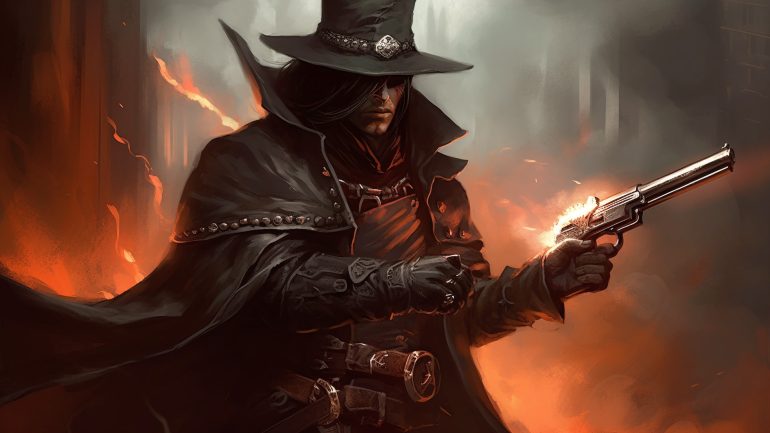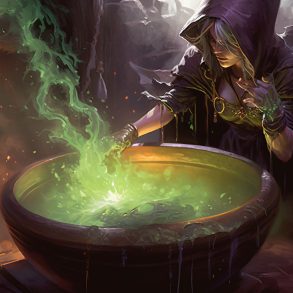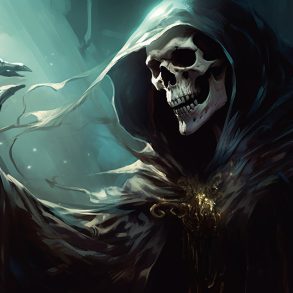Guns are fun, and anybody who collects them may agree with you. As one of the most dangerous ranged weapons, they can be very deadly. So grab your wild west outfit, mount your horse, and get ready for high noon, cause in this Gunslinger DnD 5E guide we’re talking about this unique class.
Limits and choices of firearms and gunslinging
Guns aren’t something every setting includes. You will have to work with your DM to determine if gunpowder has been discovered in the campaign, whether it would be acceptable to play a gunslinger, and if you can have a gun at some point in the campaign. In campaigns where guns are on the market, you can easily make anyone a gunslinger, though if they haven’t even been invented, you will have to make them.
Next, you need to determine the kind of firearms that fit the setting: Renaissance, Modern, or Futuristic. Options for all these types can be found in the (DMG, p. 268), though you can always brew up one of your own. But if you were to look them up on DND Beyond, you’d see a few more firearms used in Critical Role.
However, firearms that haven’t been refined, such as when you make them yourself, or it’s an untested prototype, might have what’s called a Misfire score. Your DM may determine the misfire score of a particular firearm. And what the score does, is if you roll equal to or lower than the misfire score on the d20 for an attack roll, you automatically miss as the bullet doesn’t leave the chamber or flies off in a harmless direction.
If a firearm misfires, it becomes unusable, and you need to spend your action to make a check with Tinker’s Tools to fix it, and your DM can pick any score, though it would be recommended to pick one that you use to craft the weapon in the first place (more on that later). The DC for this repair check is 8 + The Weapon’s Misfire Score, and if you fail, you have to spend half the gold cost of the weapon to fix it.
Typically, ammunition for a gun costs 3 GP for a batch of 10 bullets (3 SP per bullet), but your DM can set their prices, and even for different firearms if they so choose. And each gun needs to be loaded with an attack, or an action, before you can attack with it, and you also need to not have both hands occupied with strangling the rogue for “borrowing” one of your guns without permission. But on the other hand, some firearms can fire multiple shots before needing to reload, which makes them better than crossbows, but you can’t recover bullets like you can recover bolts. Guns are still more expensive!
Now you can’t just pick up a gun and fire it like a maniac. That doesn’t work too well, especially as to how that increases the Misfire score by 1 (if you use that), making it more likely to break. If you want proficiency in firearms, you can trade proficiency in Martial Weapons for proficiency in Firearms. But as for determining what score is needed to fire a gun, it’s always Dexterity. Strength may be needed to lift a heavier gun, but precision will always win out over brawn.
Finally, suppose you want to be the one making your own Firearms. In that case, you will need to have discovered the knowledge somehow, whether through experiments, a demonic pact, divine inspiration, or simply stumbling upon a sketch of one, you will need gunpowder for the ammunition. You will also need to spend time and money to craft it, with Tinker’s Tools being the preferred tool for this job and Intelligence and Dexterity coming in handy.
Good classes for gunslinging
Now, I want to list the classes that you can turn into gunslingers, and I’ll be ranking on a 1-5 basis as follows:
1 – Usually a bad choice, to be avoided
2 – Below average, this can apply to powerful but very niche abilities
3 – Average to Good, you won’t go wrong with it
4 – Very good
5 – Amazing, a must-have if there is such a thing
Artificer 5 – Artificers get proficiency by default (so long as you have been exposed to the operation of firearms), meaning they sacrifice nothing for it, and since a lot already use crossbows, the loading property isn’t a new issue, and they get expertise in all tools by level 6, so a broken gun will waste your action if you don’t have any backups. All in all, this is my first choice when it comes to gunslinging.
Barbarian 2 – Barbarians rely heavily on Strength. And while some are Dexterous enough to wield a Firearm properly, it’s not worth ditching Martial Weapons until your opponents are out of range. Even then, a handaxe is still better as it still uses Strength. Regardless, you lose out on the extra rage damage, which can be powerful in combat. Besides, you should be in melee range unless your enemy is flying above you if you’re a Barbarian.
Bard 3 – Bards tend towards Dexterity but need help with Proficiency and don’t rely on weapons that often anyway. But if your other methods of dealing damage don’t work or aren’t fast enough, a gun is always fun. Or it could just look cool.
Cleric 1 – Clerics have plenty of spells that harm at range, one of which (though it costs a spell slot) even grants Advantage for the next person. Not to mention: Clerics typically don’t invest in Dexterity.
Druid 1 – Druids don’t use metal much anyway, and their spell list contains decent ranged spells. If you need range and don’t care about long-range, grab a sling and magic stone. You’ll save a lot of gold unless small rocks are scarce or expensive. I don’t know what world you play in.
Fighter 5 – With a lot of attacks, Martial weapon proficiency, Fighting Styles, and the ability to rely on Dexterity pretty well, Fighters can become pretty strong gunslingers, though they may struggle with repairs if they aren’t proficient, and cost quite a bit of gold along the way with how many bullets they fire. But with a battle master or Matt Mercer’s Gunslinger (Found on DNDBeyond), you can dish out some pain on your foes with good planning.
Monk 3 – Surprisingly enough, monks play pretty well with guns. Even though they don’t get to use a bonus action to make an unarmed strike all the time, according to RAW, they can still use Flurry of Blows after they fire anyways. So if you do that all the time, no worries. Plus, they can pick up Tinker’s tools as part of their class. The only other issues I can think of is any feature that requires a monk weapon can’t use a gun, you don’t get to use your monk dice for the attacks (not that it matters that much), and they don’t have any real way to build into it.
Paladin 2 – Paladins rarely fall onto Dexterity (though some do), Divine Smite doesn’t work on ranged attacks, and their fighting styles don’t help much here either. If it weren’t for the issue with Divine Smite, this could easily rank 4, as they would out-damage the Artificer with ease. But unfortunately, this is just going to be left as a last-ditch effort when enemies don’t stay in range.
Ranger 5 – They may not be as good as Artificers are at repairing guns, but they can sure dish out damage with Hunter’s Mark, a good fighting style, an already firm reliance on Dexterity, and more spells that synergize with ranged attacks, Rangers are better than Artificers in a shoot-off, especially if they lean into it. And hiding is very dangerous in combat, especially our next class.
Rogue 5 – Sneak Attack says it all. No, really, it relies on you using a ranged weapon and can deal 10d6 at the highest level. Plus, with Reliable Talent at level 11, you never roll less than 10, even on a nat 1. So you will never waste gold on fixing your gun—just ammunition. Not to mention, they have a subclass that can use a bonus action to Use an Object, which I could only assume applies to fixing a gun. So even if your gun jams, you can keep firing without missing a beat at Level 3! Plus, you can play the part of an evasive gunslinger. The only issue is that you only get 1 attack each turn, but it deals so much damage, you barely waste any gold on bullets. Now THAT’s what I call a gunslinger!
Sorcerer 1 – Yeah, I already burned through my reasons with the Cleric and Druid. My point still stands: Your cantrips are strong enough to suffice.
Warlock 4 – If you go Hexblade, you can really put a firearm’s damage output to the test while saving invocations and Dexterity. Otherwise, you would need to ask your DM to add Firearms that aren’t Two-Handed (or you can include them if your DM allows it) to the list of weapons Improved Pact Weapons will enable you to use as a pact weapon (which makes sense as it already adds ranged weapons). Not to mention, Eldritch Smite works here, unlike the Paladin’s Divine Smite, but you have to make the right choices with Warlock, As Eldritch Blast can easily outrange almost any gun if you try. That’s what keeps it at a 4.
Wizard 1 – Once again, Wizards get a lot of damaging options, and Fire Bolt does considerable damage for the level at which you get it. It may not be reliable as it doesn’t add Intelligence to damage, but it does the job, and it does it well.
Disclaimer
This rating system exists to best help you understand the effectiveness of all the options available to the class for you to build and enjoy your character. Remember though, your fun comes first; it’s actually very difficult to build a character that is entirely bad in DnD 5E, so if you have a concept that doesn’t rate highly, you might still have fun playing it. This is a guide, not a contract written by Asmodeus. Let it advise you and not force you away from your own ideas.
It’s recommended to have your book/PDF/DnD Beyond page open to reference and follow along with the guide.



